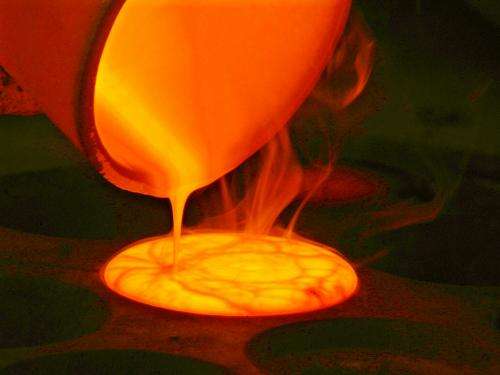Numerical model aids in gold hunt

A local mining company has begun gold production in New South Wales as a part of a $166 million project boosted by advanced numerical modelling by CSIRO scientists to increase gold-finding efficiency.
Alkane Resources' Tomingley gold mine southwest of Dubbo was officially launched by New South Wales Minister for Resources and Energy Anthony Roberts in March.
The mine was launched with an expected cash flow of around $20-$25 million based on an average yearly production of up to 60,000 ounces of gold.
West Australian CSIRO scientists collaborated with the company before production began in February, using numerical modelling to provide important information about Tomingley's three gold deposits.
CSIRO Earth Science and Resources Engineering team leader Peter Schaubs says numerical modelling uses computer programs to simulate processes that are difficult to reproduce with physical experiments.
"If for example we see there's mineralisation in a particular orientation and it occurs along faults and we can see that faults have moved in a certain direction," he says.
"[Then] we can essentially squash the model so that it deforms to create that movement on the fault and then test to see if the hypotheses are correct.
"Geologists can then test that with a few selected drill holes as opposed to other methods like pattern drilling which is a less efficient method and more expensive.
"The ultimate aim is to predict mineralisation that geologists haven't yet found."
CSIRO's collaboration with Alkane Resources is part of its SME Engagement Centre's Connect Researchers in Business project.
Dr Schaubs says Alkane Resources wanted to maximise use of its data to increase its efficiency in finding gold but didn't necessarily have the skills to do that in-house.
Previously the company's digital data sat in a variety of different software platforms, he says.
The information included geological data about faults, known deposits and the orientation of rock in addition to geophysical data gleaned from drill holes and samples taken for assay analysis.
Dr Schaubs describes it as a three phase procedure; the first is a 'visual inspection' generating ideas about why mineralisation exists where it does.
The second phase gives the information a numerical value and the third uses all the data to test hypotheses and simulate where new deposits could be located.
"It is about testing the geologists' hypotheses about how the mineralisation got where it is using a simulation, as opposed to just putting their foot and nose to the ground, although they still have to do that," Dr Schaubs says.
Provided by Science Network WA




















